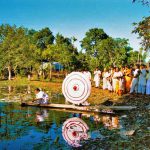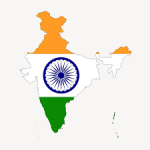Assam is famous among the many wildlife holiday destinations in north-eastern India. The state is made up of many explored and unexplored protected areas and national parks. With five national parks, two of which are UNESCO World Heritage Sites, and several wildlife and bird sanctuaries, Assam is a haven for nature lovers. At the heart of its overwhelming biodiversity is Assam’s lush topography, with lush hills and valleys carved by the mighty Brahmaputra River and its many tributaries. Assam is home to more than 180 species of mammals, including rare and endangered species such as the Indian rhinoceros, royal Bengal tiger, golden langur, hoolock gibbon, and spectacular birdlife. The most famous parks in Assam are Kaziranga and Manas. Both were listed as World Heritage Sites in 1985.









- Wild Life National Park: Kaziranga National Park covers 858 km² and lies on the flood plains on both sides of the Brahmaputra River. The forest is dotted with vast savannah grasslands, wetlands, and river islands formed by the changing course of the Brahmaputra River. The park is home to over 70% of the world’s unicorn rhinoceros. It has the highest density of tiger prey, including large tiger prey biomass found in the country
- Manas National Park: Located in the foothills of the Himalayas in western Assam, Manas has been a wildlife sanctuary since 1928, but was declared a tiger sanctuary in 1974, a World Heritage Site in 1985 and a biosphere reserve in 1989. Considered one of the world`s rarest monkey species, the Golden Langur was first sighted in Manas in the mid-20th century. Other mammals commonly seen here are rhinoceros, elephants, tigers, miniature pigs, hapid rabbits, Assam monkeys, rhesus monkeys, leopards, golden cats, clouded leopards, squirrel cats, leopard cats, jungle cats, civets and small civets.
- Pobitora National Park: Pobitora covers an area of only 38.81 km² but has the highest rhino population in the world (93 according to the 2012 census). It’s the epitome of Kaziranga, so it’s often called the National Park Showroom and is ideal for short-time visitors.
- Dibru – Saikhowa National Park: The wetlands of the Tinsukia district of Assam cover an area of 340 km² and form the Dibru Saikowa National Park. In its original and pristine form, this is Assam’s stunning wildlife sanctuary, home to some of the rarest creatures on earth. The area’s wetlands and swamps also attract many winged tourists. As such, the park is home to more than 500 species of migratory and resident birds. Another attraction of this wildlife is the wild horses.
- Nameri National Park: 200km² Nameri National Park. The area is located in the Sonitpur district, bordering the state of Arunachal Pradesh and is also the central area of the Nameri Tiger Reserve (344 km²). The charm of nameri are tiger, leopard, clouded leopard, elephant, gaur, wild boar, sambar, barking deer, plantain hare, slow loris, langur, dhole, sloth bear, Burmese ferret badger, binturong, etc. Common terns, red-tailed butterflyfish, hornbills, white-tailed eagles, etc.
Reptiles: Assamese Roof Turtle, Indian Softshell Turtle, Indian Folding Turtle, Keel Turtle, Southeast Asian Leaf Turtle, Common Blind Snake, Myanmar Python, Indian Cobra, King Cobra, Copperhead, Monitor Lizard.
The other wildlife sanctuaries of Assam
- Garampani Wildlife Santuary
- Laokhowa Wildlife Sanctuary
- Bornadi Wildlife Sanctuary
- Chakrasila Wildlife Sanctuary
- Burachapori Wildlife Sanctuary
- Panidehing Wildlife Sanctuary
- Hollongapar Wildlife Sanctuary
- Pabitora Wildlife Sanctuary
- Sonai Rupai Wildlife Sanctuary
- Bherjan – Borajan – Padumoni Wildlife Sanctuary





